Thanks to needle-pointed northern pike teeth, and overall fearsome appearance, the northern pike is one of the most exciting fish to catch for expert and novice anglers alike. However, their teeth are for more than just show, and it can be hard to separate the truth from the fiction regarding these primeval creatures.
Northern pike have multiple rows of between 300-700 needle-like teeth on the upper and lower jaws that can grow up to one inch (2.5cm) long. They use these teeth to clamp down on their prey and rip them apart.
Understanding northern pike is key to catching them, and this guide will go over the details of this mighty fish to ensure that you will be ready the next time you come across one!
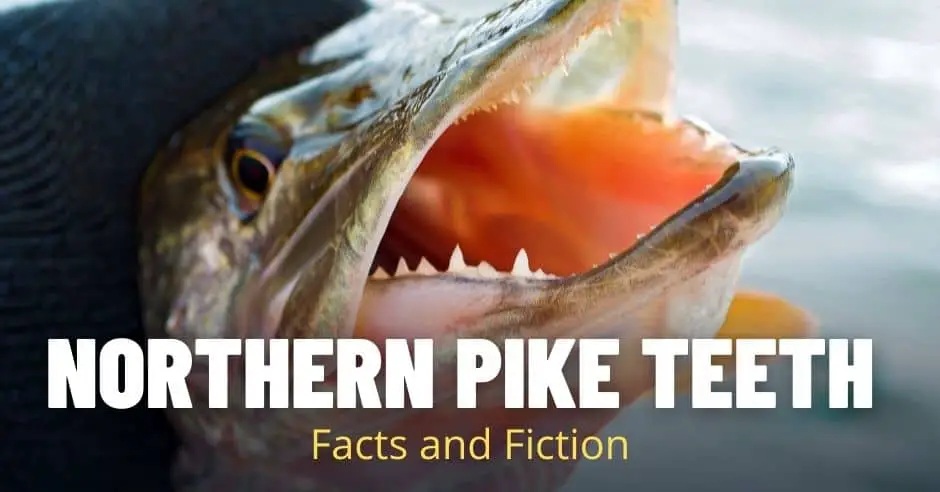
Northern Pike Teeth Facts
While the sheer number of teeth that northern pike has in their mouths is staggering, not all of these teeth are created equal. Their large fang-like teeth that spring immediately to mind when thinking of this fish are relatively few in number, and the vast majority of their hundreds of teeth are located on the upper pad of their mouth.
While the large teeth help them grasp their prey, the small needle-like ones point backward into their maw and ensure that any prey they catch is going to be unable to escape.
How Many Teeth Do Northern Pike Have?
While some outliers like the monstrous pike carcass found in the United Kingdom held approximately 700 teeth in its mouth, the vast majority of northern pike have between 300-500 teeth counting both the large fang-like ones and the smaller ones needle-pointed teeth.
The more prominent teeth can grow to be around one inch or 2.5cm in length, while the small hooked teeth that clamp onto their prey are usually 0.2-0.4 inches or 0.5-1cm in length.
Most northern pikes grow to be an average of 3-7 pounds and between 24-30 inches long, but there are outliers on the top end of that range.
In most cases, the larger the fish, the older it is, and while they eat almost anything smaller than themselves, they have no natural predators beyond humans.
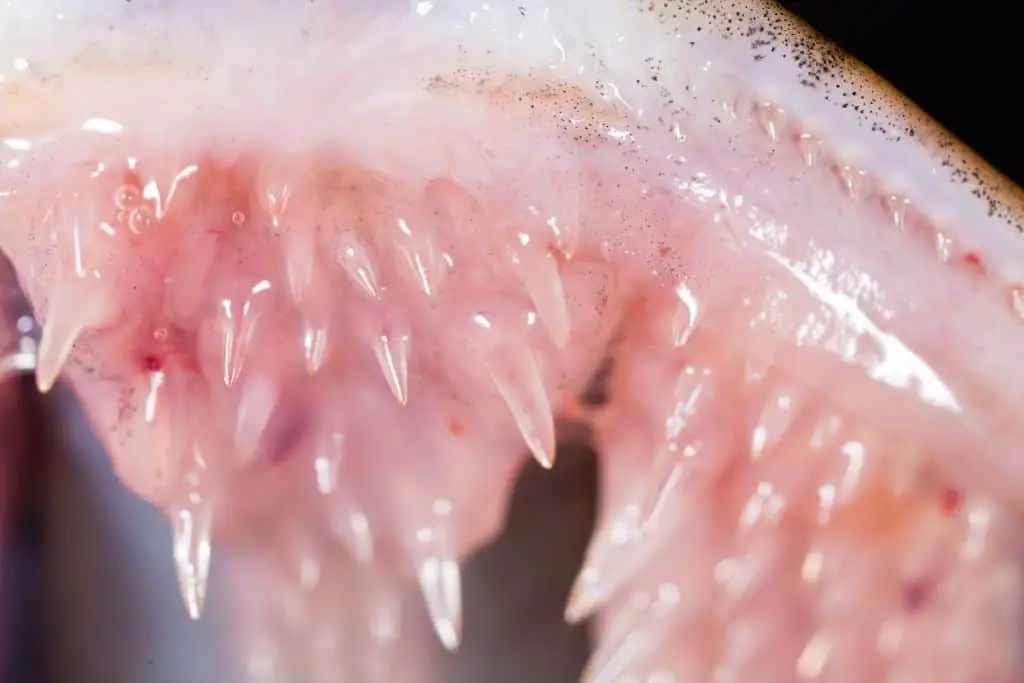
Do Northern Pike Lose (Shed) Their Teeth?
Currently, it is uncertain whether or not northern pike shed their teeth regularly. Despite numerous claims that pike shed their teeth in the summer, data from researchers on Lake Ontario determined that northern pike do not suffer a measurable loss of teeth or any weakness in their gums.
Like other animals, northern pike may lose one or multiple teeth throughout their lives due to their lack of concern when biting anything that moves. Their teeth will usually grow back in these cases and do not indicate that they shed their teeth naturally.
Do Northern Pike Attack Humans?
Although there are numerous myths and tales of pike attacking people, these are completely unfounded as northern pike are unwilling to eat anything larger than themselves.
As such, the risk of a pike biting a human while swimming is extremely low. However, humans receive bites from these fearsome predators somewhat frequently, usually when anglers try to unhook them without taking the proper precautions.
It’s worth knowing that northern pike may mistake a piece of shiny jewelry such as a reflective bracelet or watch as food and attempt to bite if they are hungry. Try to avoid dangling your hands in the water if you are in a region with northern pike and wearing potential bait!
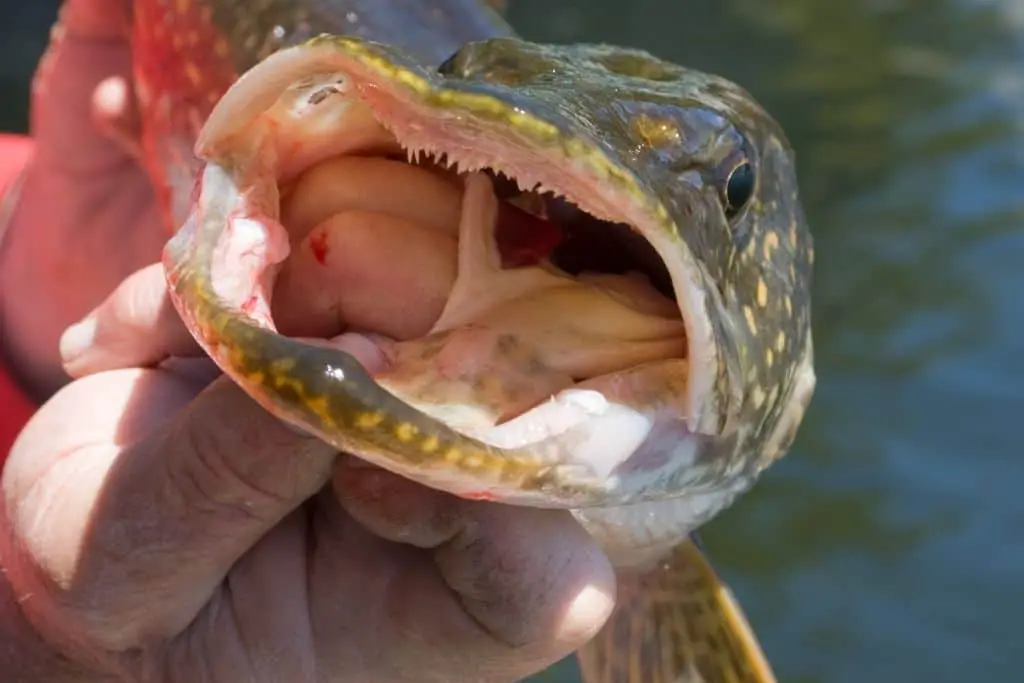
Can Northern Pike Bite Hurt Humans?
The shape of their mouths and teeth prevent northern pike from being able to bite off a finger or similar appendage, but if a pike clamps down on your hand while trying to unhook it, avoid the instinct to pull your hand from its mouth.
The rows of small hooked teeth on their upper palate will hook into the skin, and pulling your hand out will cause significant damage.
See also: Understanding Texas Rig Fishing
If a northern pike bites you, remain calm and use a combination of a jaw spreader, long-nose pliers, and an unhooking mat to loosen its grip before removing your hand. Ensure that you keep a first-aid kit on hand when fishing for northern pike, as an injury like this will require cleanup afterward.
How to Safely Hold a Northern Pike?
To avoid the potential injury from a northern pike bite:
- Wear puncture-proof armored gloves, and hold them by the gills instead of the mouth.
- Use your other hand to support their body weight and keep them slightly in the water if you practice catch and release.
- Use a hook-removing tool to safely remove the hook without any risk of damage from their sharp teeth.
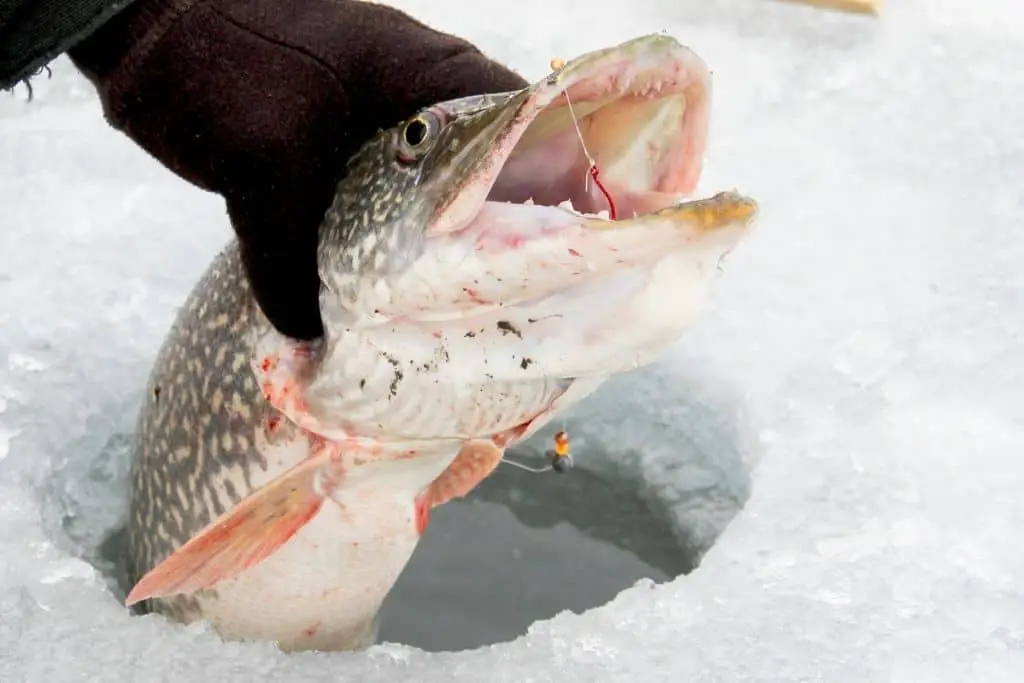
Can Pike Bite Through Braid?
With their immense strength and sharp teeth, choosing the right kind of line to reel in a northern pike can be challenging. Braid is an excellent choice thanks to its strength and resilience, and it is a common choice for anglers going after robust or toothy fish.
While a northern pike is unlikely to have sharp enough teeth to bite entirely through a braided line, they may fray and weaken the line enough to break through repeated uses.
Nevertheless, a braided line will serve a northern pike fisher well, especially if it is combined with a couple of feet worth of monofilament leader at the end to absorb some of the impacts of the fish striking the line and will resist fraying from the effects of their teeth.
Can Pike Bite Through Fluorocarbon?
Another excellent choice of fishing line for catching northern pike is fluorocarbon. This superb material does not refract light, making it nearly invisible in the water. It also does not absorb water, making it easy to handle no matter how long it has rested in the lake or river.
See also: Can You Eat Freshwater Bass?
While fluorocarbon provides a greater abrasion resistance than braided line, a northern pike’s teeth are certainly sharp enough to break through it. Nevertheless, many anglers still recommend using this line while pike fishing with the addition of a wire leader or a heavier type of fluorocarbon line to accommodate this powerful fish’s strength.
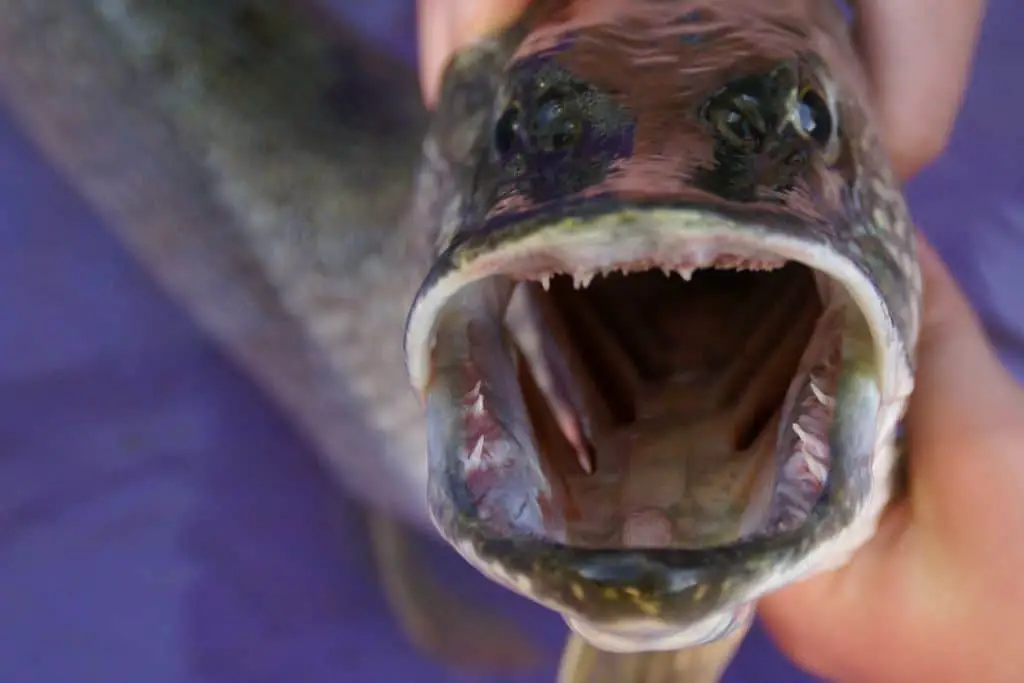
What is the Best Leader for Northern Pike?
In many cases, anglers will find that a 1 and 1/2 foot leader made from fluorocarbon that rates between 50-80 pound will be sufficient for situations where the pike are unlikely to bite the line off completely.
For larger and mightier northern pike, especially those that grow to be massive and live far off the beaten trail, a titanium wire leader will ensure that they cannot break the line and escape.
Many manufacturers produce these titanium lines with large, toothy fish in mind and design them to prevent kinking when landing a big one. The upfront cost may be higher than some other options available, but the cost of failure is often a lost fish and a disappointing trip home.
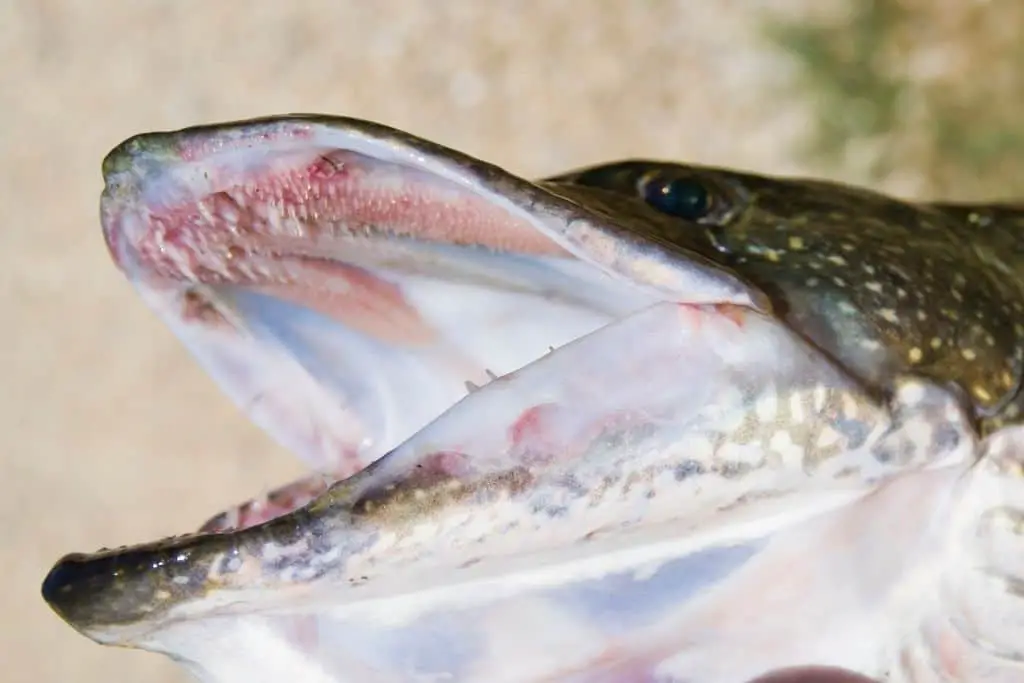
Northern Pike Teeth | Final Thoughts
The northern pike is a spectacular specimen of creature that has not changed throughout millions of years of evolution. While their prehistoric appearance and terrifying teeth lend themselves to myths and misinformation, all it takes to catch this incredible fish is understanding, patience, and the right tools for the job.
If you’re thinking of driving or flying out to a remote location to catch your own northern pike, ensure that you have prepared for their peculiarities, and keep this guide handy when purchasing supplies to guarantee that you have everything you need for your next adventure!
